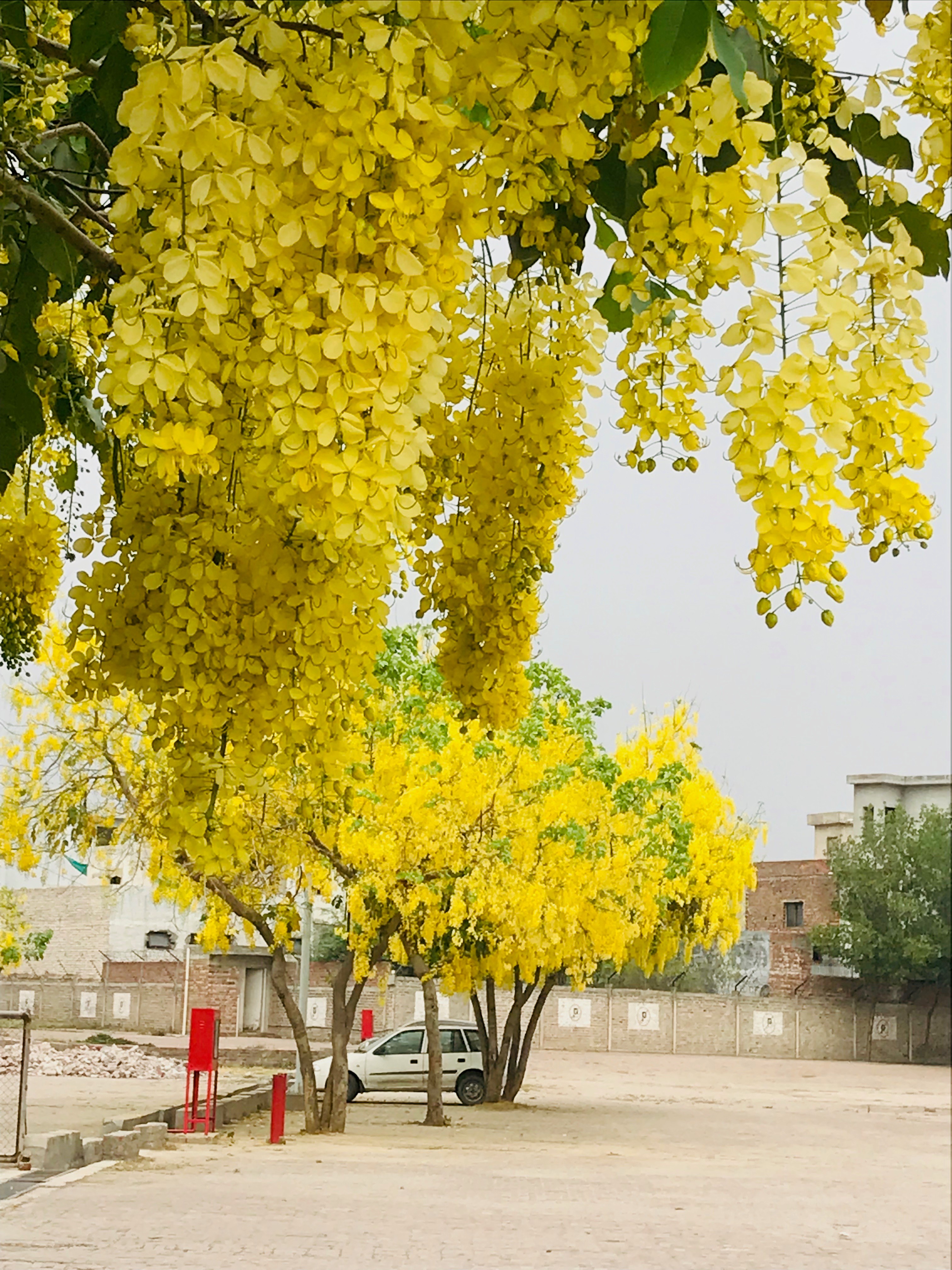Amaltaas
Species
Families
Local Names
Genus
Native/Introduced
DNA Barcode
Description
The golden shower tree is a medium-sized tree, growing to 10–20 m (33–66 ft) tall with fast growth. The leaves are deciduous, 15–60 cm (6–24 in) long, and pinnate with three to eight pairs of leaflets, each leaflet 7–21 cm (3–8 in) long and 4–9 cm (1+1⁄2–3+1⁄2 in) broad. The flowers are produced in pendulous racemes 20–40 cm (8–16 in) long, each flower 4–7 cm (1+5⁄8–2+3⁄4 in) diameter with five yellow petals of equal size and shape. The fruit is a legume, 30–60 cm (12–24 in) long and 1.5–2.5 cm (9⁄16–1 in) broad, with a pungent odor and containing several seeds. The tree has strong and very durable wood, and has been used to construct "Ehela Kanuwa", a site at Adam's Peak, Sri Lanka, which is made of C. fistula (ahala, ehela, or aehaela, in Sinhala) heartwood. The golden shower tree is not a nitrogen fixer.
Cassia fistula is widely grown as an ornamental plant in tropical and subtropical areas. It blooms in late spring/earlysummer in hot, dry weather. Flowering is profuse, with trees being covered with yellow flowers, many times with almost no leaf being seen. It grows well in dry climates. Growth for this tree is best in full sun on well-drained soil; it is relatively drought-tolerant and slightly salt-tolerant. It will tolerate light brief frost, but can get damaged if the cold persists. It can be subject to mildew or leaf spot, especially during the second half of the growing season. The tree blooms better with pronounced differences between summer and winter temperatures.
Various species of bees and butterflies are known to be pollinators of C. fistula flowers, especially carpenter bees (Xylocopa sp.). In 1911, Robert Scott Troup conducted an experiment to determine how the seeds of C. fistula are dispersed. He found that golden jackals feed on the fruits and help in seed dispersal.









































































































































